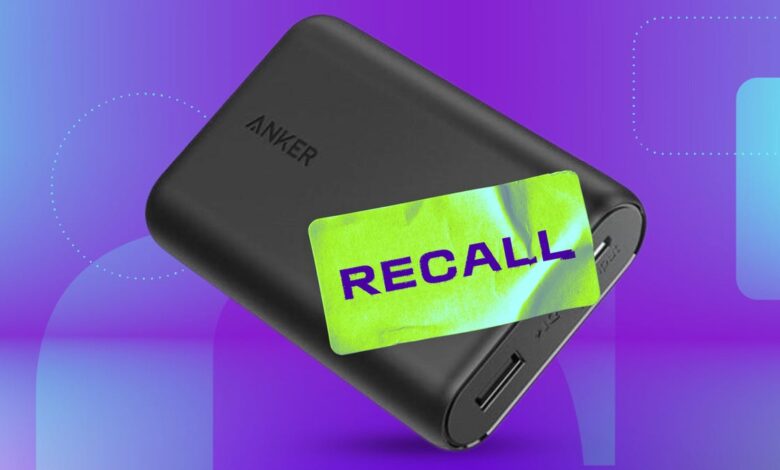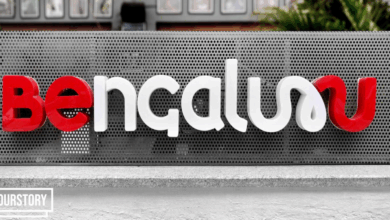Anker Recalls PowerCore 10000 Power Banks for Fires and Explosions. Get a Free Replacement

Electronics maker Anker announced an official recall of Anker PowerCore 10000 power banks with the model number A1263 on June 12. The company received 19 reports of the portable chargers catching fire and exploding.
The Consumer Products Safety Commission reports that more than 1.1 million of the products sold in the US are affected by the recall. The company plans to replace the charging devices, but customers must submit photo evidence of ownership and also prove that they’ve disposed of the PowerCore devices properly.
The PowerCore, made in China, is now one of four current power bank recalls that have been issued by Anker. The others include the 334 MagGo 10K battery, the 321 Power Bank (5K) and the 535 Power Bank (20K). Other Anker models, including two of CNET’s top picks for portable chargers — Anker 523 PowerCore Slim 10K PD and Anker PowerCore III 10K — aren’t impacted by the recall.
Airlines have taken note of portable battery hazards. Recently, Southwest Airlines changed its policy on charging devices inside of carry-on bags. Some international airlines have also begun limiting the types of lithium chargers fliers can bring on planes due to risks of overheating.
How to check if your Anker PowerCore has been recalled
Anker says the products affected are the A1263 model of the PowerCore 10000 power bank that were purchased between June 1, 2016 and Dec. 31, 2022.
Customers can verify their serial number at a webpage provided by Anker. The serial number is on the bottom of the device.
In entering the number, Anker advises, “Pay attention to the letters and numbers in the serial number: ‘1’, ‘L’, ‘I’, ‘2’ and ‘Z’. Please note that characters such as ‘0 (zero)’ and ‘O’ (o) may be entered incorrectly. Regarding the serial number of the target product, ‘O’ and ‘I’ are not used.
What to do if your Anker PowerCore has been recalled
In addition to instructing customers to stop using the chargers immediately, the CPSC and Anker posted requirements for receiving a replacement PowerCore device.
They include:
- Submitting a photo of the recalled device that shows the model number, serial number, the consumer’s name, date of the photo and the word “recalled” written in permanent marker on the device. The information not on the device can be on a piece of paper next to the device in the photo.
- Submitting a purchase receipt, though the CPSC says that’s not a requirement for the recall.
- A confirmation of disposal of the device “in accordance with applicable laws and regulations.” Anker advises not disposing of the device until receiving confirmation that it’s eligible for the recall.
- From Anker: “If the serial number is worn off or not visible, please contact Anker for guidance.”
- Anker recommends contacting a local hazardous waste collection center versus disposing of it in the trash or through standard recycling services.
- For additional questions Anker says customers can email support@anker.com with “Anker A1263 Recall” in the subject line or call 800-988-7973.
Why portable chargers can be a travel hazard
The same reasons that portable charging banks are so easy to carry around are also part of why they can pose a problem. Most use lithium ion technology, which can be used to make battery-based products lighter and efficient, but is also susceptible to overheating or even fires if the batteries are damaged or have degraded.
It’s not unlike reports a decade ago of cheap batteries on hoverboards spontaneously combusting. Eventually, the products were banned on planes and in some cases, from being shipped.
“These products are typically unassuming, and are not something that the average consumer thinks can be potentially dangerous,” said Don Fountain, a civil trial attorney and the author of Defect Safety, a book about consumer safety and defective products. Fountain is currently representing a case involving portable batteries that does not involve Anker.
“My firm has handled fires and explosions caused by lithium batteries in a variety of products, including power tools, e-bikes, phones, scooters, children’s toys, battery packs and others,” Fountain said. “I would caution consumers to not store or use these products in a confined or unventilated area that could cause overheating and to not leave these products plugged into home electrical systems for extended periods of periods of time, such as overnight or when on vacation.”
Fountain said combusting batteries are especially dangerous in cargo holds or in the cabins of airplanes where it may be difficult to put out a fire.
The attorney said that in the case of Anker’s recall, customers don’t always keep their proof of purchase, though it’s not required in this case. However, he said, “It is unusual that proof of disposal is required for a recall payment or reimbursement.”
“Most people that have had an overheating event or a small fire will simply throw the unit away before ever thinking about contacting the manufacturer for a recall reimbursement,” Fountain said.






